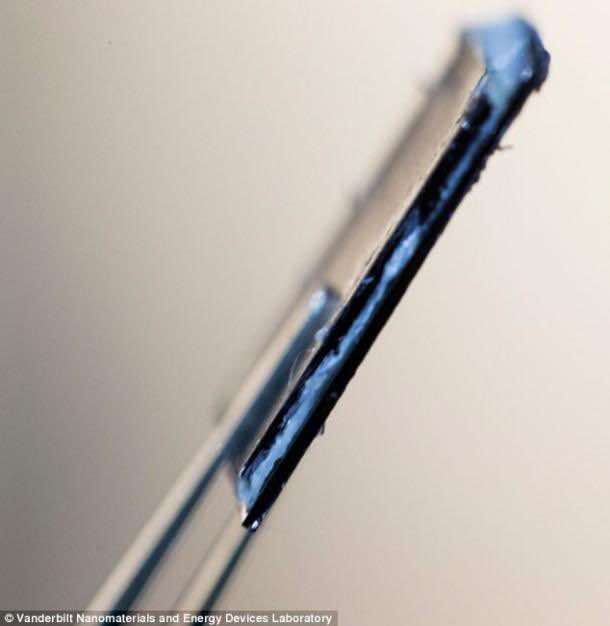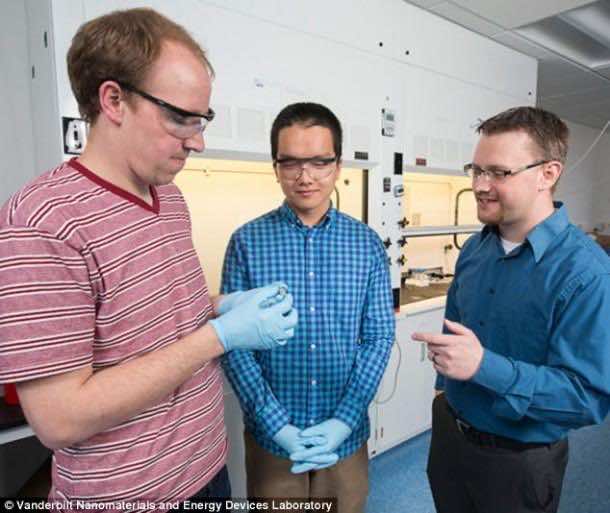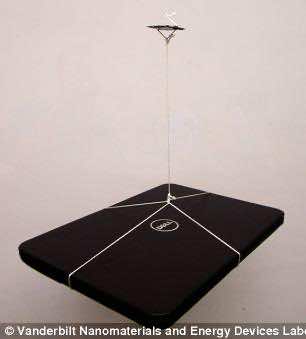Fully charging a mobile phone in minutes could soon become a reality with the help of a radical new battery technology. A new wafer-shaped material, which is kind of a super capacitor, can turn phone casings, car chassis and even walls into quick charging batteries.
Apparently the first working prototypes have been developed by researchers at Vanderbilt. Cary Pint, one of the researchers, says, “These devices demonstrate -for the first time as far as we can tell – that it is possible to create materials that can store and discharge significant amounts of electricity while they are subject to realistic static loads and dynamic forces, such as vibrations or impacts.”
The new device is a supercapacitor that stores electricity by assembling electrically charged ions on the surface of a porous material, rather than storing it in chemical reactions the way batteries do. Because of this, supercaps can charge and discharge in minutes, instead of hours, and can operate for a thousand time more cycles than batteries. Although they can only hold a tenth of the energy that lithium-ion batteries hold, their longer life means they can be used for structural applications, like being built into walls or chassis.
Researchers hung a heavy laptop from the supercapacitor to demonstrate its strength
In their latest paper, the researchers reported that their new structural supercapacitor operates flawlessly in storing and releasing electrical charge while subject to stresses or pressures up to 44 psi and vibrational accelerations over 80 G (far more than those acting on a jet engine’s turbine). Another plus point is that the mechanical robustness of the device doesn’t compromise its energy storage capability.
This new material can have some pretty interesting applications in the near future, don’t you think?





